LakeFS is a cloud-native data management platform that enables you to manage your data at scale with ease and flexibility. With LakeFS, you can centralize your data in one place, maintain version history, and control access and permissions. LakeFS also makes it easy to integrate with your existing workflow and tools, making it a powerful addition to your data management strategy.
How can LakeFS help you manage your data in the cloud?
LakeFS can help you manage your data in the cloud in many ways.
- LakeFS enables you to easily aggregate your data from multiple sources into a single repository. This can be helpful if you have data spread across multiple cloud storage providers or on-premises storage systems. By consolidating your data into a single platform, you can more easily manage your data, simplify your workflow, and save on storage costs.
- LakeFS provides powerful tools for managing your data at scale. With LakeFS, you can take advantage of versioning, which can help maintain a history of your data and for reverting back to previous versions if needed. LakeFS also makes it easy to control access to your data, so you can ensure that only the people who need access to your data have it.
- LakeFS integrates with a wide range of existing tools and workflows, making it a valuable addition to your data management toolkit. LakeFS integrates with popular cloud storage providers, so you can use it with the tools you already use. LakeFS also integrates with leading data analysis and machine learning platforms, so you can easily use your data to power your applications.
What are some of the key features of LakeFS?
LakeFS is a versatile data management platform that offers some powerful features. Here are some of the key features that make LakeFS so valuable:
Aggregation: LakeFS enables you to easily aggregate your data from multiple sources into a single repository.
Versioning: LakeFS provides powerful tools for managing your data at scale, including versioning, which can help maintain a history of your data.
How to Increase Customer Advocacy through Social Media ListeningAccess Control: LakeFS makes it easy to control access to your data, so you can ensure that only the people who need access to your data have it.
Integration: LakeFS integrates with a wide range of existing tools and workflows, making it a valuable addition to your data management toolkit.
LakeFS is a powerful data management platform that offers a versatile set of features to help you manage your data in the cloud. If you’re looking for a tool to help you manage your data at scale, LakeFS is a great option to consider.
Traffic Flow Template (TFT): Optimizing Service Data Flows in LTE Network ArchitectureIn this blog post, we’ve compiled a list of the 15 best alternatives to LakeFS, based on our own experiences and reviews from other data professionals.
You’ll Love These Alternatives!
- Looking For The BuyBest Alternative
- LookMovie Alternative That Will Keep You Entertained
- Musically Alternative That Will Make You Love Music Again
Pachyderm
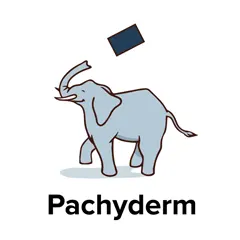
Pachyderm is an open-source data management system that enables data scientists to process and iterate on large data sets. Pachyderm provides a unified platform for data processing, storage, and analysis built on a foundation of containerization. Pachyderm is unique in its ability to process data in parallel and handle large data sets. Pachyderm enables data scientists to process and iterate on data sets quickly and efficiently.
Pachyderm’s architecture is based on containers, which makes it easy to deploy and manage. Fault tolerance and the ability to be deployed in a distributed fashion are also qualities of Pachyderms.
Logo Design Trends 2024: Exploring Emerging Branding StrategiesPachyderm is open source and available on GitHub.
Qubole

Qubole is a cloud-based big data platform that makes it easy and cost-effective to process and analyze your data at scale. With Qubole, you can quickly and easily ingest data from a variety of sources, including relational databases, NoSQL data stores, log files, clickstream data, social media data, and more. Qubole also provides a robust set of big data processing and analytics tools, so you can uncover insights that would otherwise be hidden in your data.
Best of all, Qubole is designed to work with all the major cloud providers, so you can process and analyze your data wherever it resides, whether that’s in Amazon S3, Microsoft Azure, or Google Cloud Storage.
What is Video Interaction Guidance?So, if you’re looking for a cloud-based big data platform that can help you unlock the insights hidden in your data, Qubole is worth a closer look.
Amazon EMR
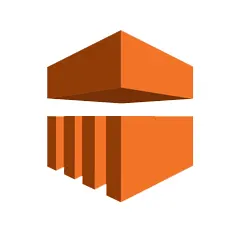
Amazon EMR is a cost-effective way to process and analyze big data. Amazon EMR clusters can scale up or down based on your data processing needs, so you only pay for the computing and storage resources you use. Amazon EMR provides a variety of features to make it easy to process and analyze your data, including integration with Amazon S3, Amazon DynamoDB, and Amazon Kinesis. Hadoop tools and applications also support a wide range of Amazon EMR, making it easy to get started with data processing and analysis.
If you’re new to data processing and analysis, Amazon EMR is a great way to get started. Amazon EMR makes it easy to launch a Hadoop cluster in the cloud and start processing and analyzing your data. Amazon EMR clusters can be easily scaled up or down based on your data processing needs, so you can start small and scale as your data processing needs grow. And, with Amazon EMR, you can focus on your data processing tasks and leave the management of your Hadoop cluster to Amazon.
Microsoft Azure HDInsight

Microsoft Azure HDInsight is a fully managed cloud service that makes it easy, fast, and cost-effective to process massive amounts of data. HDInsight is the only service that runs Hadoop in the cloud from the original creators of Hadoop – Hortonworks. Hortonworks Data Platform (HDP®) on Azure HDInsight gives you all the power of the most widely adopted distribution of Hadoop without the burden of managing complex hardware and infrastructure.
Process your big data where it lives—whether in structured data stores like relational databases, unstructured data stores like Hadoop Distributed File System (HDFS), or streaming data sources like Apache Kafka—with the performance, security, and scale you need.
Hortonworks Data Platform
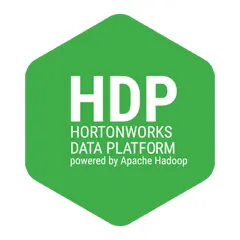
Hortonworks Data Platform is an enterprise-grade data management platform that enables you to store, process, and analyze big data. It is an open-source project that is 100% Apache Hadoop compatible. Hortonworks Data Platform is enterprise ready with the most comprehensive security, governance, and management capabilities available in the industry. Today, data is the lifeblood of every business and the key to unlocking new insights and unlocking hidden value. Hortonworks Data Platform helps you manage and govern all your data, so you can focus on what’s important to your business. With Hortonworks Data Platform, you can:
- Collect and store any data, no matter the size or type
- Process and analyze data quickly and easily
- Get insights from your data faster than ever before
Hortonworks Data Platform is the only data management platform that is 100% Apache Hadoop compatible. This means that you can use all the existing Hadoop ecosystem tools with Hortonworks Data Platform. Hortonworks Data Platform is also enterprise-ready, with the most comprehensive security, governance, and management capabilities available in the industry.
If you’re looking for an enterprise-grade data management platform that can help you get the most out of your data, Hortonworks Data Platform is the right choice for you.
MapR
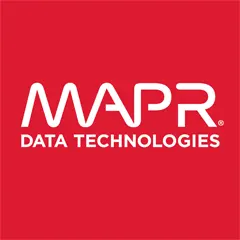
MapR is a powerful data analytics platform that enables organizations to extract value from their data in real-time. MapR provides the industry’s most complete big data platform, from the data center to the cloud. MapR enables organizations to deploy a broad range of applications and analytical tools to derive insights from their data in real-time. MapR’s unique combination of speed, scale, and flexibility enables organizations to power the most demanding applications and analytical workloads.
Organizations around the world rely on MapR to power their most mission-critical applications. MapR is the platform of choice for some of the world’s largest companies, including Adobe, ATI, Bloomberg, British Airways, Capital One, Cisco, Comcast, DocuSign, eBay, Epsilon, GE, Hilton, HP, HSBC, IBM, Intuit, JPMorgan Chase, MongoDB, Nissan, Oracle, Microsoft, Samsung, Schneider Electric, Twitter, and Verizon.
Cloudera

Cloudera Enterprise Data Hub is the world’s first truly unified platform for Big Data and Enterprise Analytics. Cloudera makes it possible to ask any question about any data, at any scale, using a single platform. Cloudera Enterprise Data Hub is the result of years of research and development by some of the world’s leading Big Data experts. At its core is the Apache Hadoop project, which enables the distributed processing of large data sets across clusters of commodity servers.
Cloudera Enterprise Data Hub adds many enterprise-grade features to Hadoop, including:
- A unified platform for data processing and analytics
- One-click integration with the enterprise data warehouse
- Support for real-time analytics
- A centralized management console
- A flexible security model
With Cloudera Enterprise Data Hub, organizations can now process and analyze all their data, regardless of size or location, on a single platform. This enables them to ask any question of their data, at any scale, and get answers in real-time.
Cloudera Enterprise Data Hub is available now. Contact us to learn more.
Databricks
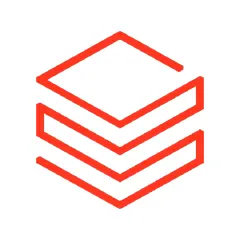
Databricks is a powerful data platform that enables companies to make better decisions faster. Databricks provides a unified data platform that consolidates data from disparate sources, processes it in real time, and then makes it available to users for analytics and decision-making. The databricks platform makes it easy for users to access data from a variety of data sources, including Hadoop, SQL, NoSQL, and object storage. Databricks provides a wide range of features that make it easy to process and analyze data, including support for streaming data, machine learning, and real-time analytics. Databricks is a highly scalable platform that can be used to process large amounts of data in parallel. The databricks platform is easy to use and provides many powerful features that make it an ideal choice for data-intensive applications.
Snowflake

Snowflake is a cloud-based data analytics platform that enables businesses to quickly and easily analyze their data. Snowflake provides a variety of benefits that make it an attractive option for businesses looking to get the most out of their data. First, Snowflake is designed to be highly scalable, so it can easily handle large amounts of data. Second, Snowflake offers a pay-as-you-go pricing model that is based on the amount of data used, so businesses only need to pay for what they use. Finally, Snowflake offers many features that make it easy to use, including a user-friendly interface, built-in query optimization, and support for a variety of data formats.
Azure Data Lake

Azure Data Lake is a cloud-based data storage and processing service from Microsoft. It is designed to handle large volumes of data from a variety of sources, such as web analytics, social media, the Internet of Things (IoT), and clickstream data. Azure Data Lake is built on top of Apache Hadoop and uses the Hadoop Distributed File System (HDFS). Azure Data Lake is fully compatible with Hadoop data processing tools, such as MapReduce, Hive, and Pig. Azure Data Lake provides a cost-effective, scalable, and secure solution for data storage and processing.
Azure Data Lake is a cost-effective way to store and process large volumes of data. It is scalable to meet the needs of the most demanding data workloads. And it is secure, with built-in security features that help protect your data.
Azure Data Lake is the perfect solution for data-intensive workloads such as web analytics, social media, IoT, and clickstream data. It is also a good choice for storing and processing data from a variety of sources.
AWS Lake Formation

AWS Lake Formation is a fully managed data lake service that makes it easy to collect, prepare, and load data for analytics. With Lake Formation, you can quickly create a data lake in minutes, and start ingesting data from a variety of sources. The service provides a set of tools for data preparation, security, and governance to help you build a secure data lake on AWS.
AWS Lake Formation is designed to work with a variety of data sources, including Amazon Simple Storage Service (Amazon S3), Amazon Redshift, Amazon Aurora, and third-party data sources. Lake Formation automatically discovers data and metadata from these data sources and makes it available for analytics in the Data Lake.
With Lake Formation, you can define automatic data ingestion pipelines to ingest data from multiple data sources into your data lake. The service includes a set of pre-built connectors for popular data sources, making it easy to get started. You can also use the Lake Formation Data Catalogue to discover and understand the data in your data lake. The Data Catalogue includes a set of predefined classifiers for popular data types, making it easy to find and understand the data in your data lake.
Apache Hadoop

Apache Hadoop is an open-source software framework for distributed storage and processing of big data sets on computer clusters built from commodity hardware. It is designed to scale up from a single server to thousands of machines, each offering local computation and storage. Rather than rely on hardware to deliver high availability, the framework itself is designed to detect and handle failures at the application layer. The core of Apache Hadoop consists of a storage subsystem (Hadoop Distributed File System (HDFS)) and a processing subsystem (MapReduce). Hadoop applications can be written in any programming language. The Hadoop framework is implemented in Java, but alternative implementations exist in other languages such as C++ (HadoopPipes), Ruby (IT), and Python (MrJob).
The Apache Hadoop framework provides a mechanism to schedule resources among various competing workloads. The MapReduce programming model of Hadoop is a parallel processing paradigm. It is built upon the Map function (which processes a key/value pair to produce a set of intermediate key/value pairs) and the Reduce function (which merges all intermediate values associated with the same intermediate key).
Amazon S3
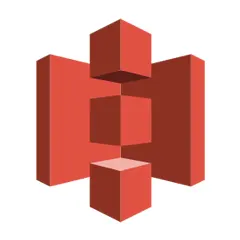
Amazon S3 is a cloud storage service that offers an extremely durable, highly available, and scalable data storage infrastructure at a very low cost. Amazon S3 is designed to provide 99.99% durability and 99.99% availability of objects over four weeks. This means that Amazon S3 can sustain the concurrent loss or corruption of two data centers located in different Availability Zones. Amazon S3 is also designed to be highly scalable. A single Amazon S3 bucket can store up to 5 PB (Petabytes) of data. Amazon S3 also offers a variety of storage types including Standard, Standard-Infrequent Access (SIA), Reduced Redundancy Storage (RRS), and Glacier. Amazon S3 is a great storage option for a variety of things. It can be used to store website static files, application data, backups, and even big data analytics workloads. Amazon S3 is also a perfect storage option for disaster recovery. In the event of an on-premises data center outage, Amazon S3 can be used as a highly available and durable backup storage option.
If you are looking for a cloud storage option that is both durable and highly available, then Amazon S3 is a great option for you.
Google Cloud Storage
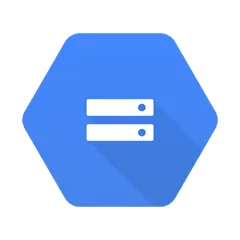
Google Cloud Storage is a cloud-based file storage service that allows you to store your data in the cloud. This service is provided by Google and is available for free. You can use Google Cloud Storage to store any type of file, including images, videos, and documents. There are two types of storage that you can use: Standard storage and Premium storage. Standard storage is free and offers unlimited storage. Premium storage is a paid service that offers more features, such as higher storage limits and lower latency. You can use Google Cloud Storage to store your data in the cloud and access it from anywhere.
Azure Blob Storage
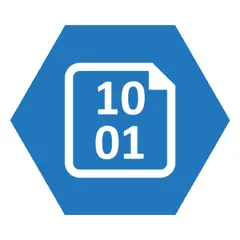
Azure Blob Storage is a cloud storage service from Microsoft that offers industry-leading security and reliability. Blob Storage is easy to use, scalable, and cost-effective, making it a great choice for storing large amounts of data.
Azure Blob Storage is a great choice for storing data that needs to be accessed quickly, such as images, videos, and log files. Blob Storage is also a good choice for storing data that doesn’t need to be accessed often, such as backups and archives.
Azure Blob Storage is a secure and reliable cloud storage service that is easy to use and scalable. Blob Storage is a great choice for storing large amounts of data.
Amazon Redshift
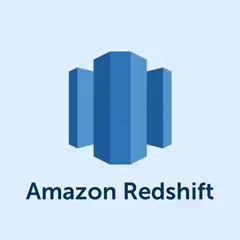
Redshift is a powerful, fast, and fully managed data warehouse service that makes it simple and cost-effective to analyze all your data at scale. With Redshift, you can scale up or down with ease, and pay only for the computing resources you use. Redshift is a great choice for a data warehouse solution for many reasons. First, it’s fast. Redshift is powered by Amazon’s high-performance computing infrastructure and can scale to support very large datasets and concurrent users. Second, it’s cost-effective. You only pay for the computing resources you use, so you can scale up or down as needed without breaking the bank. Finally, Redshift is fully managed. You don’t have to worry about provisioning or managing servers, or maintaining complex hardware and software. Redshift takes care of all that for you.
If you’re looking for a data warehouse solution that is fast, cost-effective, and easy to use, Redshift is a great choice.
Amazon Athena

Athena is a data discovery platform that allows businesses to make better decisions by turning data into insights. Athena is the fastest way to query data in the cloud, making it easy for businesses to get the answers they need to make informed decisions. Athena is built on top of Amazon S3, making it easy to store and query data at scale. Athena is a serverless platform, meaning businesses only pay for the queries they run. This makes Athena an extremely cost-effective solution for business data needs. businesses can use Athena to query data in Amazon S3, making it easy to get the answers they need to improve their business.
BigQuery
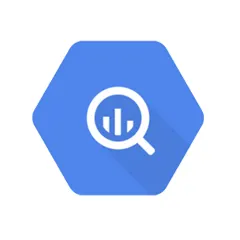
BigQuery is a cloud-based data warehouse that offers high availability and unlimited storage. It is a fully managed service that enables you to seamlessly ingest, store, query, and analyze data in the cloud. BigQuery is a powerful tool for data analysis and is perfect for businesses that have large data sets that they need to be able to query and analyze quickly and efficiently. With BigQuery, you can:
- Ingest data from any source, including streaming data
- Store data in a high-availability, unlimited-storage data warehouse
- Query data using SQL, without having to worry about managing infrastructure
- Analyze data using BigQuery’s powerful data processing and machine learning capabilities
If you’re looking for a cloud-based data warehouse that offers high availability, unlimited storage, and powerful data analysis capabilities, BigQuery is the perfect solution for your business.
Presto
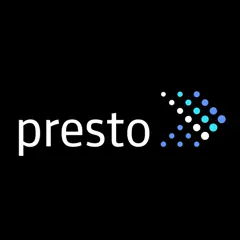
Presto is a powerful data analysis tool that makes it easy to get the answers you need from your data. With Presto, you can quickly and easily connect to your data sources, run queries, and visualize your results. Presto is built on top of the Presto DB open-source project and is available under the Apache 2.0 license. Presto is designed to be easy to use. It has a simple, yet powerful, user interface that makes it easy to get started. Presto is also highly extensible. You can add your own custom functions, data sources, and visualization plugins.
Presto is open-source software, and contributions are always welcome. Presto is developed by a team of experienced engineers at Facebook and is used by many of the world’s largest companies.
If you’re looking for a tool to help you analyze your data, Presto is a great choice. With Presto, you can get the answers you need quickly and easily.
Hive

Hive is a data platform that enables you to collect, connect, and analyze all your data in one place. With Hive, you can easily connect to all your data sources, including databases, social media, and web analytics data, and start analyzing it in minutes. Hive makes it easy to get started with data analytics by providing a simple interface and powerful tools to help you get the most out of your data. With Hive, you can easily connect to all your data sources, including databases, social media, and web analytics data, and start analyzing it in minutes.
Hive provides a variety of ways to visualize your data so you can see what’s going on in your business at a glance. You can also use Hive to create custom reports and dashboards to track your key metrics.
Hive is the easiest way to get started with data analytics and get the most out of your data.
Impala

Apache Impala is an open-source massively parallel processing SQL query engine for data stored in a computer cluster running Apache Hadoop. Impala has been described as the open-source equivalent of Google F1, which inspired its development in 2012.
Impala is designed to improve the performance of Apache Hadoop by enabling low-latency, real-time interactive analysis of data stored in HDFS and Apache HBase. Impala removes the need for end users to use MapReduce or other complex frameworks to process data stored in Hadoop, thereby giving them instant access to their data and providing them with faster query results.
Impala is an integrated part of Cloudera’s Distribution including Apache Hadoop (CDH). Impala provides fast, interactive SQL queries on data stored in HDFS and HBase without requiring data movement or transformation.
Impala is open source (Apache License).
Spark
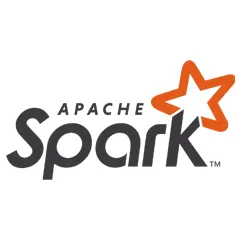
Spark is an open-source unified analytics engine for large-scale data processing. Spark provides an interface for programming clusters with implicit data parallelism and fault tolerance. Spark is designed to make data processing fast and easy. It does this by providing an interface for programming clusters with implicit data parallelism and fault tolerance. This makes it possible to process large amounts of data quickly and efficiently.
Spark is a great choice for data processing because it is fast, easy to use, and scalable. It can handle large amounts of data quickly and efficiently. Spark is also faulted tolerant, which means that if one part of the system fails, the rest of the system can continue to operate.
Flink

Flink is an open-source, unified stream-processing and batch-processing framework developed by the Apache Software Foundation. Its core is a distributed streaming data-flow engine that is written in Java and Scala. The dataflow programs that are executed by Flink are done so in a data-parallel and pipelined manner. This allows for faster and more efficient processing of large amounts of data. Flink has been designed to work with various types of data including streams, batches, and graphs. It can also be used for machine learning and other types of data processing tasks. The framework is highly scalable and can be deployed on a variety of systems, from standalone servers to large clusters.







